How one P.E.I. farm is trying to go green, despite the cost
'People are really good intentioned. They want to go green but it depends on their price points'

WavesofChangeis aCBCseries exploring the single-use plastic we're discarding, and why we need to clean up our act. You can be part of the community discussion byjoiningourFacebook group.
Some businesses on P.E.I. are making the switch to non-plastic alternatives for packaging and food service but the change is coming at a price, sometimes double the cost.
At the Schurman Family Farm in Kensington, P.E.I., they are testing out a new compostable fibre container for grape tomatoes grown in their greenhouse.
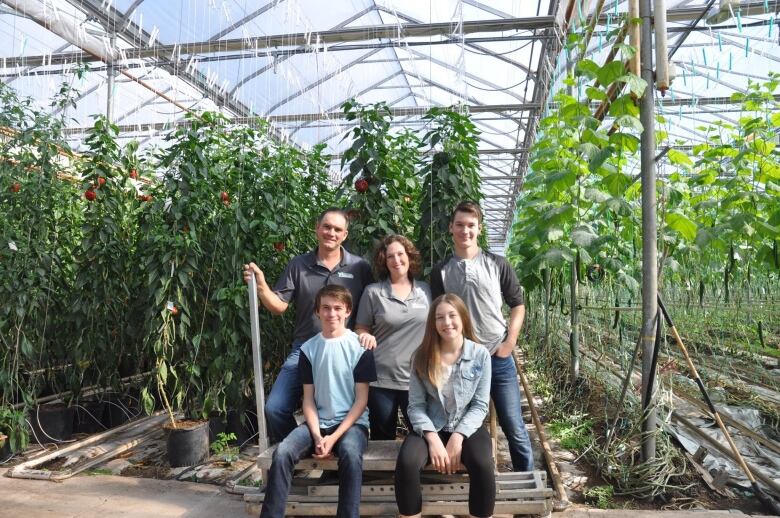
"We've been looking for a better solution for the last couple of years to using a traditional plastic pint for our grape tomatoes," Marc Schurman said.
"We were able to find some fibre pints and we're trialling those and we seem to be getting better customer acceptance to those."
- Big retailer will test reusable packaging to replace throwaway plastic in Canada
- Zero Waste P.E.I. growing awareness of plastic free options
The farm'slast attempt at green packaging didn't go as well. A project testing out a new cardboard package ended after customers gave the carton a thumbs-down.
"We just found that consumers didn't want it because they couldn't see the tomatoes in the boxes as easily," Marc said.
"People just want to see what they're buying."
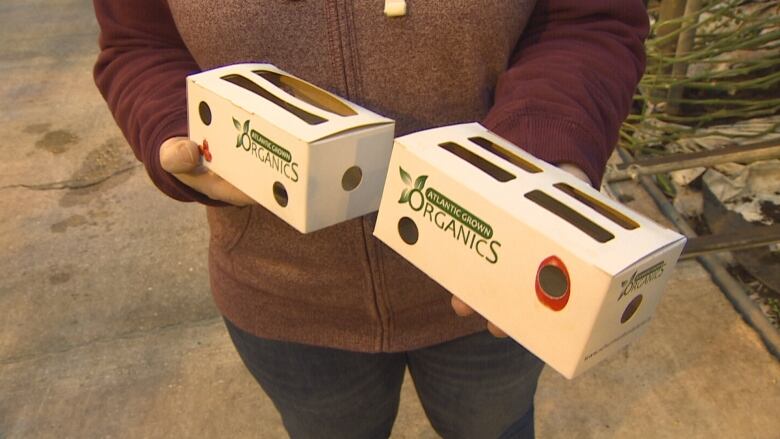
The new fibre boxes have the same issue but Marc says the response has been better than to the cardboard ones.
"There is some worry that you can't see them but it seems to be less," Marc said.
"People can see in the top so they're generally satisfied that they know what they're getting."
There are still more packaging changes to come.
"The top part is a cover and that's just a temporary measure," Marc said.
"We're hoping to get a plastic seal on the top that will be fully compostable as well."
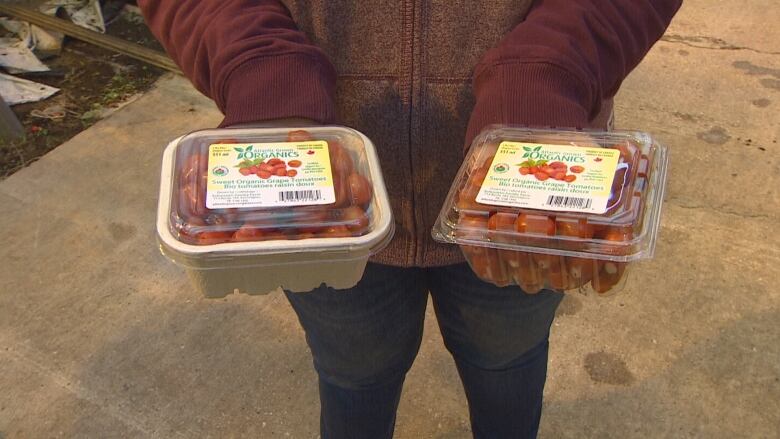
Double the cost
Sourcing the kind of non-plastic wrap they need is tough. Price is also an issue.
"The plastic pints are made by the billions in China and they're the cheaper alternative," Marc said.
"But I guess it's not the cost that we're after, it's the acceptance. Plastic pints just don't look very organic so we're trying to find something that's a little more acceptable and that's still a reasonable cost."
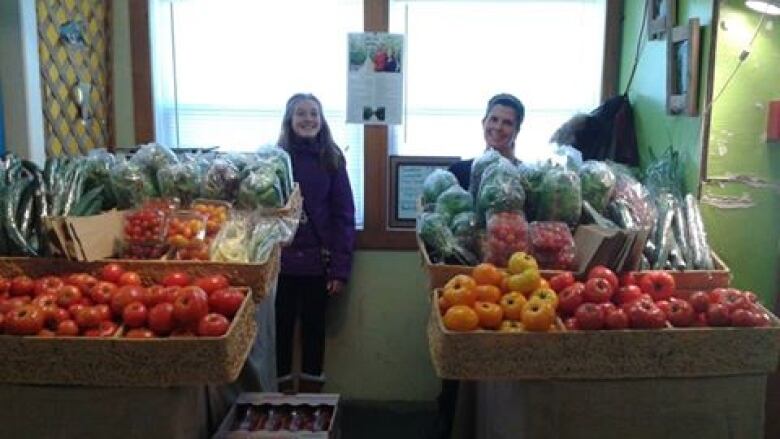
The compostable packaging is double the cost of the plastic pint, but they're hoping that will come down.
"As they become more industry standards and the volumes go up, that the suppliers will be able to bring the prices down," Marc said.
'What can we do better'
Krista Schurman talks to customers weekly at the farmers markets in Charlottetown and Summerside.
"People are asking for it, especially our customers at the farmers market," Krista said.
"With them I get the questions all the time, what can we do better."
Kristasays many of her customers at the markets are willing to pay more for greener packaging, but they also continue to push the company.

"They always ask about the cucumbers and the bags of lettuce, the poly bags that we have to use for our greens,"Krista said.
"I have to explain to them often times about the cucumbers, that they have the potential to lose the moisture and then they understand."
Kristasays they will continue to look for greener packaging options.
"You have the conversations with suppliers to see is there anything on their horizon coming down," Kristasaid.

Price is the challenge
At Kays Wholesale in Charlottetown, Kim Green is having many conversations with her customers looking for greener packaging.
"There's certainly been a huge change," said Green, who's been running the business for 10 years.
"Every year, we see more and more options for the businesses and they're slowly coming down in price as well, which is a good thing."

Green says Kays has basically anything a customerwould want in terms of takeout packaging in compostable format, but price remains the challenge.
"They're still much higher, unfortunately, than foam," Green said.
"Foam is your least expensive option. It's usually double the price, at least, to go green."
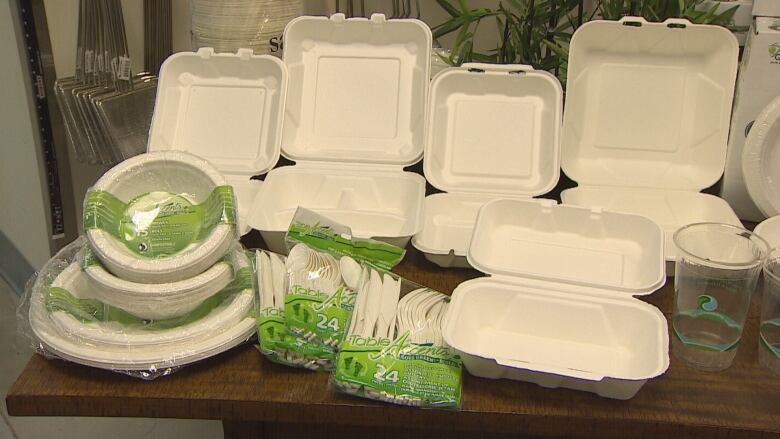
The cost, she says, can be too much for some businesses.
"People are really good intentioned, they really want to go green," Green said.
"But it really depends on their price points and sometimes they'll go green and unfortunately they'll go back to foam because of pricing."
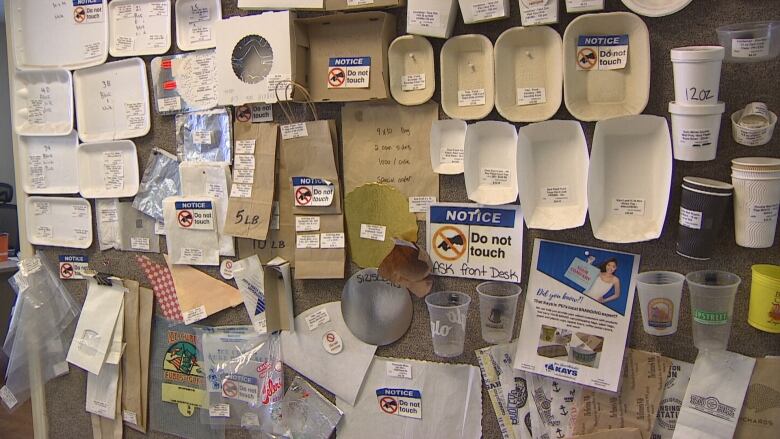
Green predicts the demand for green packaging options will continue to grow.
"I only see it expanding more and more and we're actively trying to find supply chains that can make it economical," Green said.
"They can only charge so much for a plate of fries and unfortunately the green option is much more expensive."
- Read more stories from CBC's Waves of Change project
- Discuss how we can reduce plastic pollution in ourFacebook group
- Have a story idea or feedback? Email us:wavesofchange@cbc.ca












_(720p).jpg)


 OFFICIAL HD MUSIC VIDEO.jpg)
.jpg)



























































































